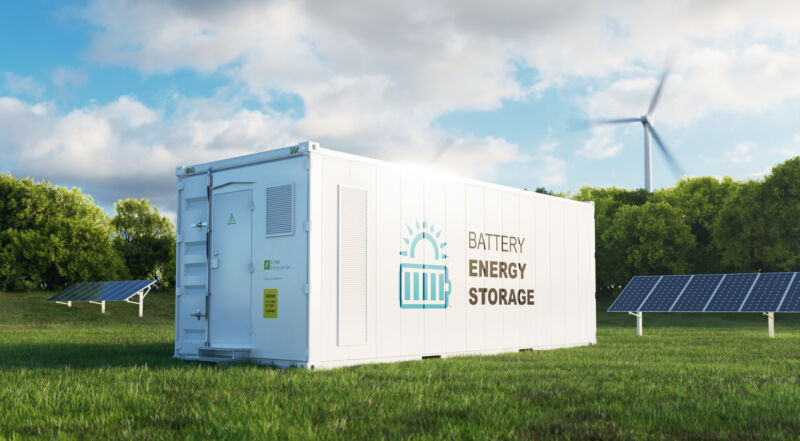

As power utilities and industrial companies seek to use more renewable energy, the market for grid-scale batteries is expanding rapidly. Alternatives to lithium-ion technology may provide environmental, labor, and safety benefits. And these new chemistries can work in markets like the electric grid and industrial applications that lithium doesn’t address well.
“I think the market for longer-duration storage is just now emerging,” said Mark Higgins, chief commercial officer and president of North America at Redflow. “We have a lot of… very rapid scale-up in the types of projects that we’re working on and the size of projects that we’re working on. We’ve deployed about 270 projects around the world. Most of them have been small off-grid or remote-grid systems. What we’re seeing today is much more grid-connected types of projects.”
“Demand… seems to be increasing every day,” said Giovanni Damato, president of CMBlu Energy. Media projections of growth in this space are huge. “We’re really excited about the opportunity to… just be able to play in that space and provide as much capacity as possible.”
New industrial markets are also becoming active. Chemical plants, steel plants, and metal processing plants have not been able to deploy renewable energy well so far due to batteries’ fire hazards, said Mukesh Chatter, co-founder and CEO of Alsym Energy. “When you already are generating a lot of heat in these plants and there’s a risk of fire to begin with, you don’t want to deploy any battery that’s flammable.”
Chatter said that the definition of long-duration energy storage is not agreed upon by industry organizations. Still, there are a number of potential contenders developing storage for this market. Here, we’ll look at Redflow, CMBlu Energy, and BASF Stationary Energy Storage.
Zinc-bromine batteries
Redflow has been manufacturing zinc-bromine flow batteries since 2010, Higgins said. These batteries do not require the critical minerals that lithium-ion batteries need, which are sometimes from parts of the world that have unsafe labor practices or geopolitical risks. The minerals for these zinc-bromine batteries are affordable and easy to obtain.
Flow batteries contain liquid or gaseous electrolytes that flow through cells from tanks, according to the International Flow Battery Forum website:
The interconversion of energy between electrical and stored chemical energy takes place in the electrochemical cell. This consists of two half cells separated by a porous or an ion-exchange membrane. The battery can be constructed of low-cost and readily available materials, such as thermoplastics and carbon-based materials. Many parts of the battery can be recycled. Electrolytes can be recovered and reused, leading to low cost of ownership.
Building these can be quite different from other batteries. “I would say that our manufacturing process is much more akin to… an automotive manufacturing process than to [an] electronics manufacturing process… like [a] lithium-ion battery,” Higgins said. “Essentially, it is assembling batteries that are made out of plastic tanks, pumps, fans, [and] tubing. It’s a flow battery, so it’s a liquid that flows through the system that goes through an electrical stack that has cells in it, which is where most of Redflow’s intellectual property resides. The rest of the battery is all… parts that we can obtain just about anywhere.”
The charging and discharging happen inside an electrical stack. In the stack, zinc is plated onto a carbon surface during the charging process. It is then dissolved into the liquid during the discharging process, Higgins said.
The zinc-bromine electrolyte is derived from an industrial chemical that has been used in the oil and gas sector for a long time, Higgins added.
This battery cannot catch fire, and all of its parts are recyclable, Higgins told Ars. “You don’t have any of the toxic materials that you do in a lithium-ion battery.” The electrolyte liquid can be reused in other batteries. If it’s contaminated, it can be used by the oil and gas industry. If the battery leaks, the contents can be neutralized quickly and are subsequently not hazardous.
“Right now, we manufacture our batteries in Thailand,” Higgins said. “The process and wages are all fair wages and we follow all relevant environmental and labor standards.” The largest sources of bromine come from the Dead Sea or within the United States. The zinc comes from Northern Europe, the United States, or Canada.
The batteries typically use an annual maintenance program to replace components that wear out or fail, something that’s not possible with many other battery types. Higgins estimated that two to four years down the road, this technology will be “completely competitive with lithium-ion” from a cost perspective. Some government grants have helped with the commercialization process.